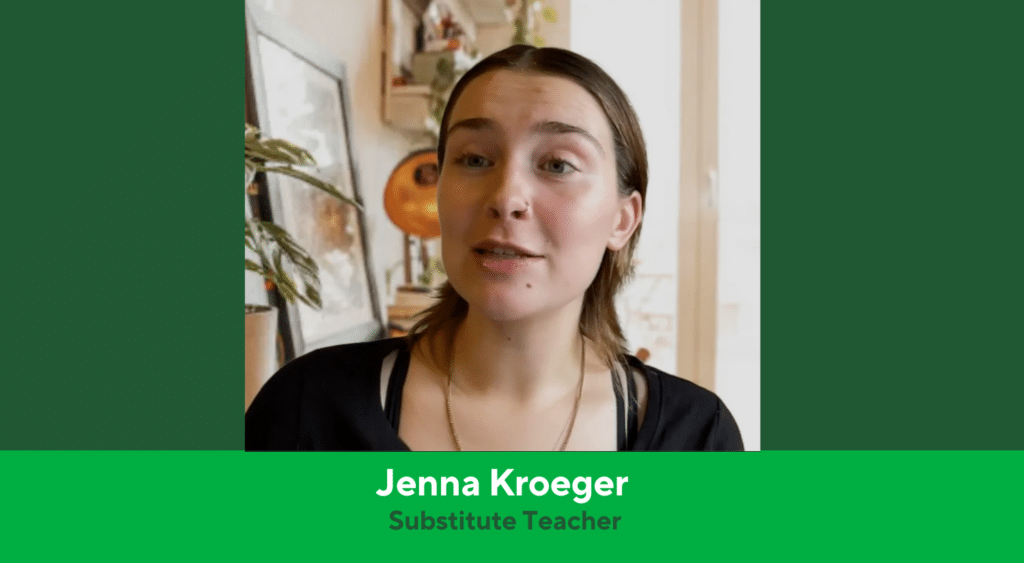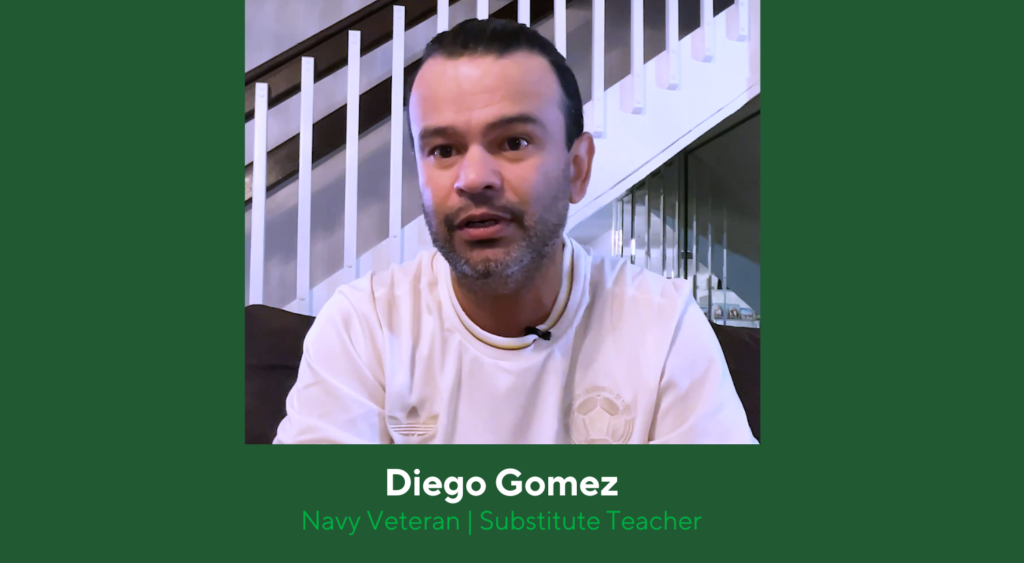Day in life of a building substitute teacher.

As a building substitute teacher you’ll work a more consistent schedule than a daily sub, often five days a week at a single school. Typically, as a building substitute teacher, you’ll be filling the greatest need each day. So, you’ll see less flexibility in choosing subjects or grades. For example, you might start your day teaching 7th-grade science class and end it by cheering on 5th-graders in a relay race.
Benefits of being a building substitute teacher:
- Consistent schedule and paycheck
- Build connections with faculty, staff, and students
- Become a trusted part of the school community
Here’s what a day in the life of a building substitute teacher might look like in a middle or high school setting if you aren’t covering for a single teacher.
Morning routine.
You arrive at school early with plenty of time to spare. Walking into the office, you’re greeted by the school receptionist. You sign in and review your assignment.
Looks like you’re covering 9th-grade math class, then after lunch it’s two health class periods. Today, you have three free periods. Looking over your assignments, you think, “This should be a breeze.”
You make your way up to the first classroom. A friendly face shows up at your door; it’s the neighbor science teacher. She introduces herself, shares some tips, and offers help if needed.
Thankfully, the teacher has left a detailed lesson plan with worksheets and homework. The students will review exponents and radicals. After reviewing the assignment and brushing up on your math skills, you feel ready to take on the day. And just like that, the first-period bell rings.
Your first class of the day.
You greet the students with a smile as they arrive in the classroom. Once everyone’s seated, you introduce yourself and take attendance. You explain the lesson plan for the day. “Does anyone have any questions?” you ask. You’ve lucked out on this one. The students appear to understand their task and get straight to work.
While walking around the classroom, you help students stay focused, answer questions, and maintain a productive learning environment. Before you know it, it’s time to collect the assignment and pass out homework. You double-check to ensure students understand everything, and a few minutes later, the bell rings.
With the next period free, you leave the teacher a detailed note and get ready to head down to lunch. The phone rings as you’re packing your things up. It’s the school receptionist: “We need you to cover an 11th-grade science class. The teacher had to leave unexpectedly.”
Navigating shifting responsibilities.
Substitute teacher jobs typically come with surprises. Heading toward the science classroom, you wonder what topic the students will cover today.
You arrive just as the last students trickle in. With the unexpected teacher absence, no lesson plan was left behind. You need to think on your feet. You ask the students what they’ve been working on this week and learn they’re in the middle of building water filtration systems with natural materials.
After students get into their groups, you walk around the classroom to see if anyone needs help. Most students are pretty dialed in, but one group struggles to assemble their filter. You sit with them and look over the instructions. Working together, you overcome this hurdle and complete the project.
As the period ends, students put away their materials and discuss the project as a class. You leave 11th-grade science class with a new understanding of water filtration systems and the fulfillment of helping students reach those “aha” moments.
Lunchtime.
You make it to the lounge and pull out the salad you made this morning. Teachers must stay on campus during lunch. You chat with another teacher, sharing about your day so far. While science class was unexpected, it was a subtle reminder to always be prepared for the unknown–the role of a building substitute teacher is all about flexibility.
Of course, you’re no expert in every subject and grade level. However, your adaptability and passion for helping students is what matters. After finishing your lunch, you’re excited to head to health class and see what’s in store.
Afternoon classes.
The 10th graders are hit with the post-lunch slump, and there’s no lesson plan in sight! Instead of stressing, you think back to how you handled science class. After introducing yourself and taking attendance, you ask the students what they’ve covered this week. The topic is nutrition. With drowsy students and no lesson plan, you wonder, “How can I make this fun?” It’s time to create an interactive group assignment!
As students get into their groups, you pull together a lesson that’s equally educational and entertaining. You’ve got it! First, you’ll design a menu with unhealthy options. Then, the students will create their own menu of healthy alternatives. Each group can then share with the class how they’ve enhanced each dish to make it nutritious, and rate each other’s menus.
PRO TIP: Check out these articles about backup worksheets for substitute teachers and tips for tackling substitute teaching in core and elective classes.
Walking around the classroom, you observe students getting creative with their menus, while discussing different elements of nutrition. As each group shares, you think to yourself, “What a success!” Not only did students reinforce their learning, but they also had a blast working together and thinking outside the box. With your lesson plan ready, you take a breath and prepare for the next class.
Ending the day on a high note.
Wrapping up the day, you’ll tidy up the classroom. Then, you tackle writing a note to the various teachers who were absent. Most of them know you, so you can get right to the point of explaining what students covered, how each class went, and any challenges you faced.
Grow as a substitute teacher with Kelly Education.
Want more advice? We have an entire library of helpful articles for substitute teachers. They include:
If you or someone you know is interested in substitute teaching jobs, fill out our brief interest form. One of our recruiters will contact you to answer your questions. We’ll also share more about opportunities to become a substitute teacher or support staff with one of our school district partners.
View Related: Article Considering options
You might like
Find your next job
Discover thousands of temporary, full-time, and remote jobs for beginning and experienced job seekers.





